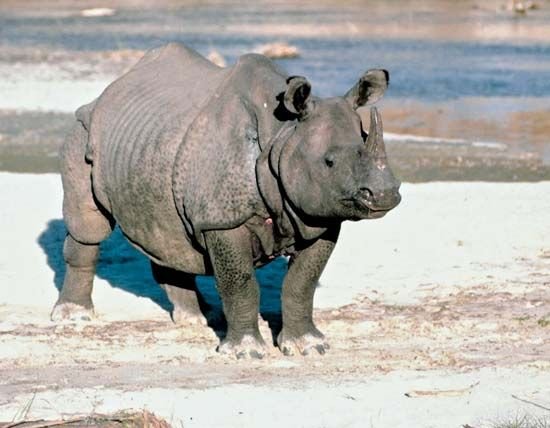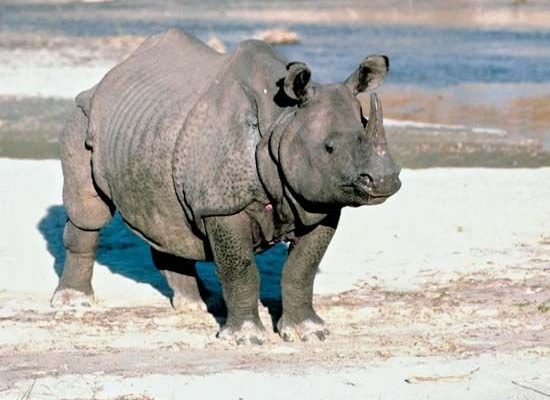
Let’s dive into this topic and explore the reality of the Indian rhinoceros and human interactions. You might picture a rhino as a peaceful herbivore, quietly grazing under the sun. But, just like any wild animal, they have their own set of rules and behaviors that can lead to danger. Let me break down the facts for you.
Understanding the Indian Rhinoceros
The Indian rhinoceros, also known as the one-horned rhinoceros, is a unique species found mainly in the grasslands of India and Nepal. With its thick, wrinkly skin resembling armor, it’s easy to see how this creature has adapted to its environment. But what truly sets it apart is that single horn, which can grow up to 25 inches long.
These rhinos are usually solitary animals, preferring to roam alone or in small groups, especially females with their calves. They are herbivores, munching on grasses, leaves, and shrubs. However, don’t be fooled by their seemingly peaceful grazing habits; they can be quite territorial, especially males. So, while they might look like gentle giants, they have a fierce side that can pop up unexpectedly if they feel threatened.
The Habitat of the Indian Rhinoceros
Indian rhinoceroses thrive in dense forests, riverine grasslands, and swampy areas. Their habitats are typically near water sources, allowing them to cool off during hot days. These environments not only provide food but also act as cover from potential threats.
However, the increasing loss of habitat due to deforestation and human encroachment has made their living situation more precarious. As humans invade their territory, it’s essential to discuss how this impacts human-rhino interactions and whether that leads to dangerous situations.
Can Indian Rhinoceroses Be Aggressive?
You might be wondering, “Are Indian rhinoceroses really dangerous?” The short answer is yes, they can be. Here’s the thing: although they generally prefer to avoid human contact, they can become aggressive if they feel threatened, particularly by humans encroaching on their territory.
Imagine walking through a grassy plain and stumbling upon a rhino. If it feels cornered or surprised, it can charge with incredible speed for such a large animal—up to 30 miles per hour! This quick burst can catch anyone off guard. In some cases, people who accidentally come too close to a rhino, whether by hiking or driving through reserves, have found themselves in risky situations.
Human Encounters with Indian Rhinos
The nature of human encounters with Indian rhinoceroses varies widely. Some locals, particularly those living near their habitats, have learned to coexist peacefully. They understand the rhinos’ habits and know when to keep their distance.
However, misunderstandings often occur. For instance, tourists might unknowingly approach too closely for that perfect photo. In crowded parks or reserves, this can lead to dangerous encounters, as startled rhinos may react defensively. The importance of understanding their behavior can’t be overstated.
Protecting Yourself Around Indian Rhinoceroses
If you ever find yourself in a situation where you might encounter an Indian rhinoceros, there are a few essential tips to keep in mind:
- Keep your distance: Always stay far enough away to avoid startling the animal.
- Follow guidelines: If you’re in a wildlife reserve, listen to park rangers and follow their instructions carefully.
- Be aware: Pay attention to your surroundings and the behavior of the rhinos.
By respecting their space and understanding their behavior, you can minimize the risks of a dangerous encounter.
Conservation Efforts and Human-Rhino Relations
Conservation programs are crucial in managing both rhino populations and human interactions. Many organizations focus on protecting their habitats and educating locals and tourists about these magnificent creatures.
By promoting awareness and understanding, these efforts aim to minimize confrontations and foster a peaceful coexistence between humans and Indian rhinoceroses. Programs also help emphasize the ecological importance of rhinos in their habitats, which benefits the entire ecosystem.
In summary, while Indian rhinoceroses can certainly be dangerous to humans under certain circumstances, most interactions can be safe and positive with the right respect and knowledge. They are complex creatures with their own set of behaviors and instincts, and by understanding them, we can ensure better relationships.
So, the next time you think about this majestic animal, remember: they are not just big, armored beasts. They have their own unique nature, and with awareness and caution, we can appreciate their beauty without putting ourselves at risk.

